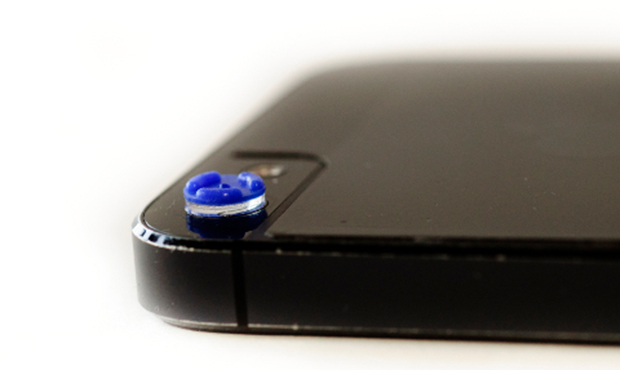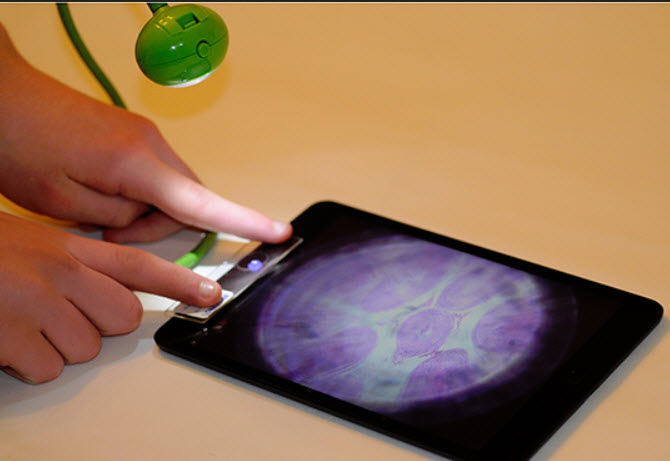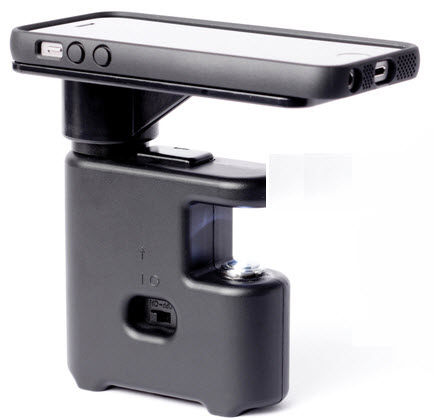Low-cost, compact optics that turn a smartphone into a powerful portable microscope
April 17, 2014

Micro Phone Lens 150X (credit: Thomas Larson)
University of Washington (UW) graduate Thomas Larson is developing a lens that will turn any smartphone or tablet computer into a handheld microscope that magnifies by 150 times.
It’s an improved version of his Micro Phone Lens, a pliable lens that magnifies 15 times, or 60x with phone zoom. (Standard laboratory microscopes usually magnify between 50 and 400 times.)
Users simply stick the lens flat onto a smartphone camera lens (no adhesive needed), turn on an external light source such as a lamp, then run the phone or tablet in camera mode. Moving the device closer to or farther from the object brings it into focus.
Other products that can adapt a smartphone to be used as a microscope are significantly more expensive and the attachments are heavy or require permanent adhesives, according to Larson.
The 150X lens is being funded via a Kickstarter project, which will be funded by Friday, Apr 18, 2014 at 12:01 PM PDT. The product will ship in July as rewards of the Kickstarter campaign; general Sales will begin mid-late summer.
Larson told KurzweilAI that major applications include medicine for diagnosis in regions where microscopes are not available, research, and education.
Larson said he is working with a global health physician to try to test the microscope at a clinic in Kenya, and he’s getting feedback from teachers on what they need for their students.
“While there are other cell-phone based microscope devices, those currently available are rather low magnification,” he said. “Furthermore, they require mounting specific to each model of cell phone, limiting their use. They are also fragile and much bulkier.”
Micro Phone Lens 150X
Microbescope
Another smartphone-based microscope is the Microbescope from 4D Optical, capable of an impressive 800x magnification, or even 2,000x, using the zoom features on newer iPhones — which is near-diffraction-limited performance.
The Microbescope doesn’t require any supplies like glass slides, and there are no knobs to adjust. The specimen is placed directly on the inverted lens, and the internal AAA-size battery-powered light source provides the illumination.
The iPhone 5s allows for a slow motion capture ability, 4D Optical says. “Many microbes move at very high speeds and slow motion capture enables us to see them do some pretty weird things.”
The Microbescope is also funded by a Kickstarter campaign, which will end on Saturday April 19, 2014 at 6:20 PM PDT.
KurzweilAI has pledged for both campaigns and we will report on what we (and you) discover.
Microbescope

